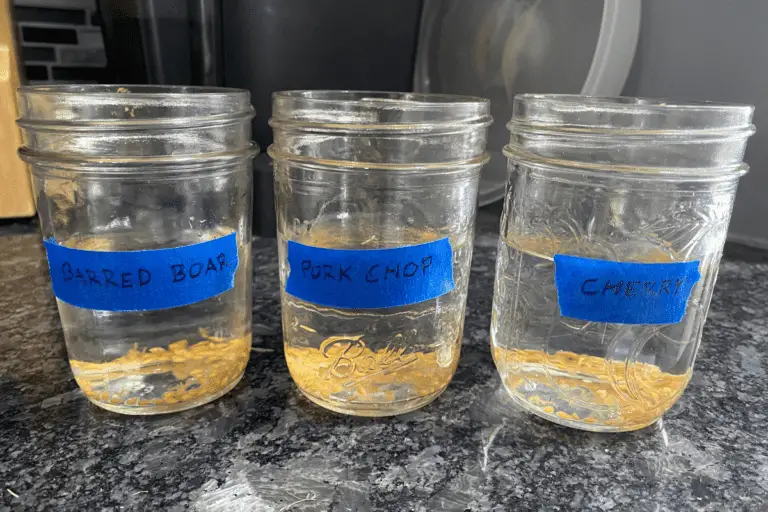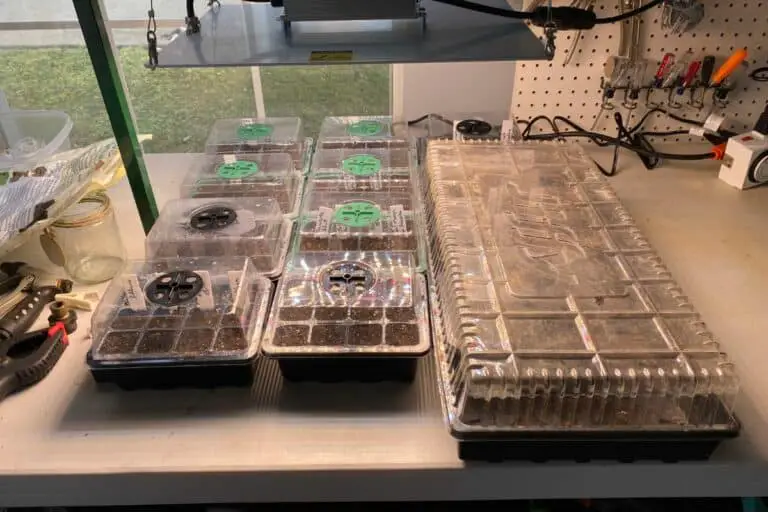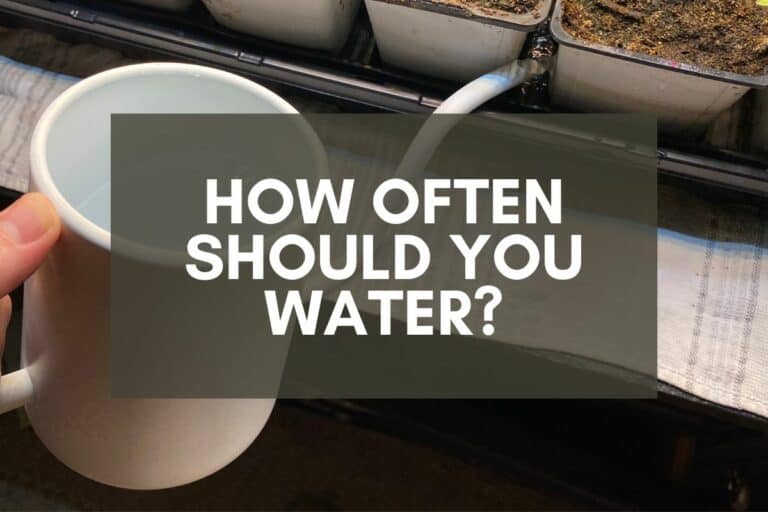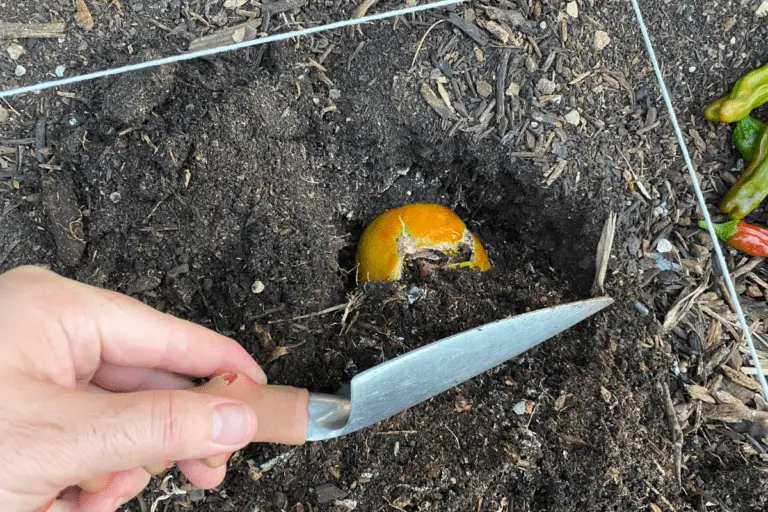Germinating Tomato Seeds with Heat Mats: A Beginner’s Guide
If you’ve decided to grow your tomato plants from seed this year—instead of purchasing seedlings at your local garden center—you’ll need to find some quality seeds, but more importantly, you’ll want to get the very best germination rates possible.
This is why heat mats are a must-have for anyone growing tomatoes from seed.
Heat mats are a safe, reliable way to improve germination rates because they increase soil temperatures, encouraging embryonic activity, and causing seeds to sprout. Tomato seeds germinate best in soil that’s roughly 75°F (24°C), making heat mats the perfect tool for increasing germination rates.
The good news about heat mats is that they’re easy to use, even if you’re a beginning gardener. The bad news is that heat mats alone won’t guarantee high germination rates since there are other important factors to consider, namely soil quality and moisture levels.
That being said, this article will cover everything you need to know about heat mats plus the things I’ve done over the years to get the best germination rates possible from my tomato seeds.
Before we get started, please know that heat mats sometimes go by other names–such as warming mats, germination mats, and propagation mats–but I’ve always referred to them as heat mats, so that’s what I’ll stick with throughout this article.
Heating Mats and Tomato Seeds: What You Should Know
When I first started growing tomatoes from seed–which I did for the first time back in 2012–I knew very little about growing anything from seed, so I bought a cheap grow light, filled a few seed trays with soil, and planted my seeds.
Luckily for me, the bulb on that old grow light emitted noticeable heat, which meant that my seed trays were getting warmed by the bulb since I had lowered it within 1 inch (2.5 cm) of the soil. In turn, my seeds were germinating fairly well. I wasn’t getting superb germination rates, but I was averaging around 75% or so using nothing more than a cheap grow light.
Unfortunately for me, that same heat also created problems since, on several occasions, I didn’t notice that my seedlings had grown tall enough to touch the metal housing, which ended up burning them. I switched over to an LED grow light a few years later, but the first year after doing so, my germination rates went way down.
In fact, my germination rates were so low that year that I went out and purchased several tomato transplants from my local garden center.
That’s when I realized that my old grow light had done something that my new grow light wasn’t doing: warm the soil. Once I had that realization, I started looking for solutions and quickly came across heat, mats. I’ve been using them ever since.

Now that you know what led me to heat mats, I’d like to provide a quick but detailed overview of the questions I had about them (and that most people who are new to warming mats probably have), such as:
- Are heat mats safe?
- When should I use heat mats?
- When should I not use heat mats?
- How hot do heat mats get?
- How long should I leave heat mats running each day?
- How long does it take tomato seeds to germinate on a heat mat?
- Are there alternatives to heat mats?
By the end of the article, you’ll know all you need to know to use heat mats successfully this year.
Are Heat Mats Safe?
With any energy-using device, I want to make sure it’s safe before plugging it in and letting it run for days on end. The same goes for heat mats.
When I first bought my heat mats, I worried about running them all day long for numerous days on end. Would they heat up too much or too quickly? Could they cause a fire?
To increase soil temperature, heat maps emit noticeable heat, but they don’t get so hot as to melt seed trays or pose a fire hazard to your home or belongings. That being said, heat mats shouldn’t be submerged in water, exposed to extreme temperatures, or laid near any flammable objects.
When it comes to heat mats, I primarily use them in my garage during the colder winter months. The heat mats stay on a large fold-out table, their cords draped properly off the back of the table and plugged into a power strip.
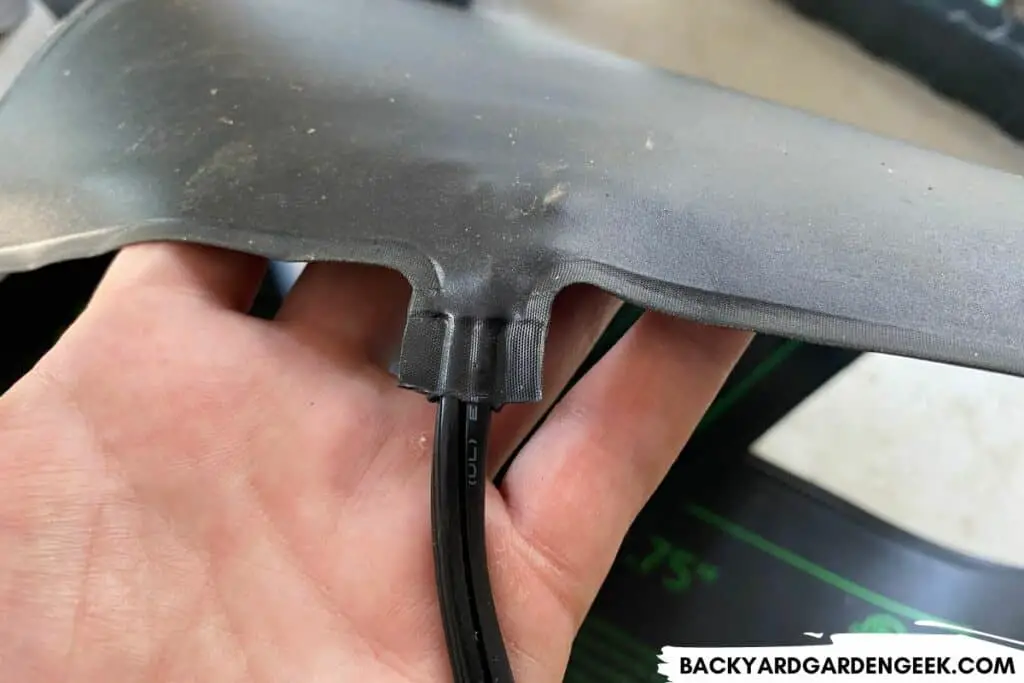
The mats aren’t hot to the touch, and they’re unlikely to cause any property damage when used properly. However, I’m the kind of person who likes to play it safe when it comes to heating equipment, so I’m careful not to let them come in contact with anything that’s remotely flammable.
When Should I Use Heat Mats?
As I noted above, heat mats should only be used when your soil would otherwise be too cold for proper germination to occur, typically 65°F (18°C) or lower.
The best time to use heat mats is during the winter since soil temperatures will drop sharply during the coldest months of the year. If temperatures are too low, seeds will go dormant as they wait for warmer spring weather.
This is great if you’re looking to store your tomato seeds for next year–and it’s why many people store their seeds in the refrigerator–but this is a bad thing if you’re attempting to germinate your seeds.
What this means is that seed mats don’t just heat up the soil. Coupled with appropriate moisture levels, they actually trick the seeds, making them think it’s spring and thus spurring on seeds’ embryonic activity. As moisture and heat levels mimic spring, seeds respond in kind, sending out their first roots (known as radicles) into the soil while pushing their first leaves (known as cotyledons) up toward warmth and light.
Want to see what germinated tomato seeds look like? To see this process up close, try germinating a few tomato seeds in water or, better yet, place several seeds in a moist paper towel that you then seal up inside a plastic bag for 5-7 days. You can then take the germinated seeds, place them carefully in soil, and watch them grow.
On the other hand, if you’re germinating seeds in a cold basement or garage (like I do each year), heat mats will be absolutely essential to proper seed germination. If you’re doing so in a climate-controlled room, especially somewhere indoors, heating mats are less necessary but still helpful depending on your indoor temperatures.
Remember that tomato seeds love soil that’s around 75°F (24°C), so the colder your soil is, the more you’ll need to rely on heat mats.
When Should I Not Use Heat Mats?
As you might have already guessed, you’ll have no need for heat mats if you’re growing seeds during the hot summer months.
When I lived up in New Jersey, I never did this sort of thing. We had 1 growing season that began in spring and ended with the first fall frost, and that was that. You couldn’t grow anything during winter because the ground was covered in snow for several straight months.
All that changed when I moved to Texas. Unlike the single growing season that I had in New Jersey, I quickly realized that I could grow plants practically year round in Texas since the winters were so mild. I now start seeds for my fall garden in July, August, and September, and I keep my home around 73°F (22°C), which is warm enough for seeds to germinate without the assistance of heat mats.
One final thing: Heat mats are not meant to be left outside or exposed to the elements. If you’ve got a greenhouse with electricity, you can use heat mats in there just fine, but if you’re growing plants by seed in outdoor environments, you definitely shouldn’t use a heat mat unless you’ve got a patio or some other kind of overhead structure that ensures the heat mats are well-protected against wind, rain, and storms.
How Hot Do Heat Mats Get?
When used properly in a well-ventilated space, heat mats will be warm to the touch but not hot. They’ll never burn your fingers when handling them because the heat they emit is carefully calibrated, warm enough to warm the soil up but not so warm as to cause bodily injury.

In particular, the Vivosun heat mats I have in my garage use infrared heating technology to warm up my seed-starting soil. They don’t feel all that hot to the touch, but the constant warmth they emit is enough to raise soil temperatures.
My heat mats do a great job at keeping the soil between 70-85°F (22°C), even in a relatively cold garage, and I’ve found that my heat mats raise soil temperatures by more than 10 degrees.
I’ve never tried using heat mats in super frigid temperatures—like an uninsulated garden shed or greenhouse—but I’d be willing to bet that the mats could easily heat soil that would otherwise be 45°F (7°C) up to 55-65°F (12-18°C).
This wouldn’t be the ideal temperature range for seed germination, but it would definitely give you a far greater chance of success than simply planting your seeds and hoping for the best.
How Long Should I Leave Heat Mats Running Each Day?
When germinating seeds, be sure to leave heat mats on 24/7 since that’ll keep your seed-starting soil at a consistently warm temperature.
Tomato seeds need 3 things for proper germination: warm soil, moisture, and oxygen. If you’re growing seeds in the months leading up to spring, you’re doing so during a time when it’s cold outside, which means your soil temperatures will fluctuate if you turn the heat mat on and off each day. Don’t do that since you could delay the germination process.
Here’s what I’d do instead: Turn the heat mats on and leave them on until all of your plants have germinated. At that point, warm soil is no longer necessary since the plants need light and moisture more than anything else. You can either warm up a new seed tray or roll the heat mats up and store them for next season.
If you’re concerned about running heat mats all day, try this instead: Attach an appliance timer to the wall, connect your heat mat to it, and program the appliance timer to turn the heat mats on and off at the times that you think best.
This is the simplest and most cost-effective way to manage your heat mats since you can pre-determine how long they stay on each day.
How Long Does It Take Tomato Seeds to Germinate on a Heat Mat?
Heat mats will help with tomato seed germination rates because they raise the overall temperature of the soil, increasing the probability that seeds will mistake changing temperatures for a change in season and initiate embryonic activity.
But what difference does this actually make? And how long will it take for tomato seeds to germinate?
As a general rule, tomato seeds need 7-10 days to germinate, but heat mats can speed up the germination process by 1-2 days since they increase soil temperature to a more optimal 75°F (24°C). At this temperature, seeds can germinate in as little as 5 days with consistent watering and moist soil.
If you can do all of your seed germination indoors–preferably inside your house or in a climate-controlled basement–you’ll be better off than me. I don’t have a good space inside my house for that kind of thing, so I mostly germinate my seeds in my detached garage, although I do occasionally start seeds indoors. Unfortunately, the garage gets pretty chilly during winter, so heat mats are absolutely essential for soil warmth.
And here’s the great thing: Despite the frigid temperatures outside and the overall chilliness of my garage, I get great germinate rates because, from what I’ve seen over the past few years, the heat mats mostly keep the soil above 70°F (21°C) throughout winter.
On a few occasions, my garage has gotten exceptionally cold due to winter weather, but on the whole, the heat mats are all I need to keep my seeds warm and encourage germination. There’s very little sunlight in my garage, but that doesn’t matter since seeds don’t need sunlight to germinate.
Obviously, where you live and where you set up your seed-starting station will play an important role in how cold your soil gets. If your growing area gets truly frigid–maybe you’re starting your seeds in a garage that lacks proper insulation or inside a shed or greenhouse–you might need to find ways to warm the overall space or select a different location to grow seeds in.
But assuming you’re not exposing your seed-starting soil to frigid temperatures, the seed mats will be all you need to germinate seeds and grow healthy, beautiful plants.
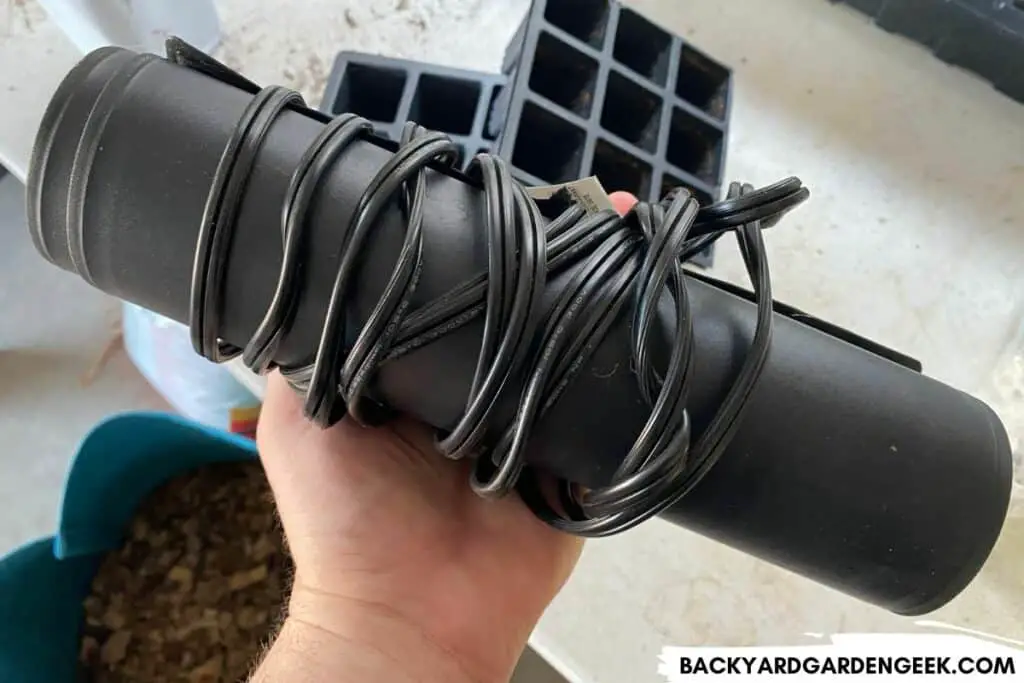
Are There Alternatives to Heat Mats?
Keep in mind that the only reason to use heat mats is to warm the soil. If you’ve managed to warm the soil in other ways, heat mats are an unnecessary accessory.
Let’s say you’ve outfitted your growing space with the works: grow lights, heat lamps, oscillating fans, and other equipment. If you’ve gone this far to create an ideal seed-starting environment, you likely won’t need heat mats because your space is already ideally heated.
Some people use heat lamps, but I’ve found that they sometimes increase the soil temperatures too much, not to mention they can get quite hot and thus become a possible fire hazard.
I feel the same way about portable heaters. While you might be tempted to set up a portable heater in your garage to increase the overall temperature of your growing space, you’ll want to pay close attention to the manufacturer’s directions so that you don’t inadvertently create a fire hazard by doing so.
If you’re not interested in using heat mats for one reason or another, I recommend checking out incandescent or fluorescent grow lights. Unlike many LED grow light systems, incandescent and fluorescent bulbs radiate heat, although incandescents will do so at a much higher rate than fluorescents.
The upside is that this heat will increase soil temperatures when positioned above the seed tray. The downside is that you’re using more energy than you would if you were using heat mats to warm the soil.
Which Seeds Benefit from a Heat Mat?
I’ve found that heats mats will benefit most seeds when it comes to germination rates, especially if you’re getting a headstart on spring planting by germinating seeds during the colder winter months.
What this means is that heat mats are going to provide the greatest benefits for the kinds of plants that you’d plant in a spring garden, not for those varieties that you’d germinate in a summer for a fall garden or those plants that grow best by direct sowing.
Here are my recommendations for seeds that’ll benefit most from heat mats:
| Plant Variety | Benefit Most | Benefit Least | Direct Seed |
|---|---|---|---|
| Arugula | ✔ | ||
| Basil | ✔ | ||
| Beans | ✔ | ||
| Beets | ✔ | ||
| Bok Choy | ✔ | ||
| Broccoli | ✔ | ||
| Brussels Sprouts | ✔ | ||
| Cabbage | ✔ | ||
| Carrot | ✔ | ||
| Cauliflower | ✔ | ||
| Celery | ✔ | ||
| Chives | ✔ | ||
| Cilantro | ✔ | ||
| Collards | ✔ | ||
| Corn | ✔ | ||
| Cucumber | ✔ | ||
| Eggplant | ✔ | ||
| Dill | ✔ | ||
| Fennel | ✔ | ||
| Garlic | ✔ | ||
| Kale | ✔ | ||
| Kohlrabi | ✔ | ||
| Lavender | ✔ | ||
| Leek | ✔ | ||
| Lemongrass | ✔ | ||
| Lettuce | ✔ | ||
| Marigold | ✔ | ||
| Marjoram | ✔ | ||
| Melon | ✔ | ||
| Mint | ✔ | ||
| Mustard | ✔ | ||
| Okra | ✔ | ||
| Onions | ✔ | ||
| Oregano | ✔ | ||
| Parsley | ✔ | ||
| Parsnip | ✔ | ||
| Peas | ✔ | ||
| Peppers | ✔ | ||
| Potatoes | ✔ | ||
| Pumpkins | ✔ | ||
| Radishes | ✔ | ||
| Rutabagas | ✔ | ||
| Rosemary | ✔ | ||
| Rue | ✔ | ||
| Sage | ✔ | ||
| Shallot | ✔ | ||
| Spinach | ✔ | ||
| Squash | ✔ | ||
| Strawberry | ✔ | ||
| Swiss Chard | ✔ | ||
| Sunflowers | ✔ | ||
| Tarragon | ✔ | ||
| Tomatilloes | ✔ | ||
| Tomatoes | ✔ | ||
| Thyme | ✔ | ||
| Turnips | ✔ | ||
| Sage | ✔ | ||
| Spinach | ✔ | ||
| Sweet Potato | ✔ | ✔ | |
| Watercress | ✔ | ||
| Watermelon | ✔ |
Additional Resources
If you’re looking to grow tomatoes from seed this year, you might be interested in these related articles:

